Anti-aircraft missile systems of the Tor family
9K330 "Thor"
The lead developer of the promising anti-aircraft complex “Thor” was appointed by the Research Institute of Radioelectronics of the Ministry of Radio Industry. The chief designer of the complex was V.P. Efremov, for the development of the 9А330 combat vehicle was answered by I.М. Drize. The development of an anti-aircraft guided missile 9М330 was entrusted to the Fakel ICB, PD became the chief designer. Grushin. In addition, several other defense, radio-electronic, and other enterprises were involved in the creation of various elements of the anti-aircraft complex. industry.
Changes in the nature of the alleged war affected the requirements for the new air defense system. Complexes for military air defense had to fight not only with enemy planes and helicopters. The list of targets of the Tor complex was supplemented by cruise missiles, guided by bombs and other types of weapons, replenishing the arsenals of a potential enemy. To protect the troops from such threats, it was required to use new electronic systems. In addition, over time, the requirements for the size of the transportable ammunition have changed. As a result, it was decided to build a new anti-aircraft complex based on a caterpillar chassis. This basic technique provided the possibility of combat work in the same order as tanks and BMP. At the same time, the customer had to abandon the requirements regarding the possibility of crossing water barriers by swimming.
All the main units of the 9K330 complex were placed on the 9А330 combat vehicle. As the basis for this machine, the GM-355 chassis of the Minsk Tractor Plant was used. A special equipment was installed on the chassis, as well as a rotating antenna-launching device (tower) with a set of antennas and a launcher for anti-aircraft missiles. By increasing the requirements for combat capabilities, the 9А330 had to be brought to 32 tons. Nevertheless, the 840-strong diesel engine provided mobility at the level of existing tanks and infantry fighting vehicles. The maximum speed of the Tor complex on the highway reached 65 km / h. Power reserve - 500 km.
The 9А330 combat vehicle housed a target detection station (SOC), a guidance station (СН), a special computer for processing information about targets, and an eight-cell launcher for missiles. In addition, the car had navigation and topographic location systems, a gas turbine electric generator, life support equipment, etc.
To detect the targets, the Tor system used a coherent-pulsed SOC of a circular view operating in the centimeter range. A rotating antenna located on the roof of the antenna-starter provided a simultaneous overview of the sector width 1,5 ° in azimuth and 4 ° in elevation. The increase in the sector of the review was achieved by the possibility of using eight positions of the beam at an angle of elevation, thereby overlapping the sector with a width of 32 °. The priority of the review of sectors was determined by a special program of the onboard computer.
The target detection station could operate in several modes. The main was the mode of the review of the surrounding space for 3 with. At the same time, the lower part of the field of view was “examined” twice during this time. If necessary, other SOC modes of operation could be applied, including with simultaneous overview of several elevation sectors. The automatics of the 9K330 complex could track up to 24 targets simultaneously. By processing the coordinates of the detected targets at different points in time, the computer of the complex could calculate up to 10 traces. Information about the objectives was displayed on the corresponding screen of the workplace commander of the machine.
SOC and associated automation allowed to detect F-15 type aircraft at altitudes of 30-6000 m at distances up to 25-27 km (detection probability is at least 0,8). For guided missiles and bombs, the detection range did not exceed 10-15 km. There was the possibility of detecting helicopters on the ground (at a distance of 6-7 km) and in the air (up to 12 km).
In front of the honor of the tower complex "Tor" located phased array of coherent-pulse radar guidance. The duties of this system included the tracking of the detected target and the guidance of guided missiles. The CH antenna provided detection and tracking of the target in a sector of 3 ° width in azimuth and 7 ° in elevation. In this case, the target was carried out in three coordinates and the launch of one or two missiles with their subsequent aiming at the target. As part of the guidance station antenna, a command transmitter for missiles was provided.
SN could determine the coordinates of the target with an accuracy of 1 m in azimuth and elevation, as well as around 100 m in range. When the transmitter power is at the level of 0,6 kW, the station could switch to automatic tracking of a fighter-type target at a distance of up to 23 km (probability 0,5). When the aircraft arrived at 20 km, the probability of taking on autotrack increased to 0,8. SN could only work on one goal at a time. Allowed to launch two missiles on the same target with an interval of 4 with.
During combat work on the position, the reaction time of the complex was 8,7 s, while escorting troops and launching a rocket from a short stop, this parameter increased by 2 s. The transfer of the combat vehicle from the marching position to the combat position and back took about three minutes. On loading of new missiles in the launcher took about 18 minutes. Loading ammunition was carried out using a transport-charging machine 9Т231.
For the destruction of targets, the Tor system used the 9М330 rocket. This product is made according to the “duck” scheme and is equipped with a cylindrical body with folding steering wheels and stabilizers. Having a length of 2,9 m and a starting weight of 165 kg, such a rocket carried a high-explosive fragmentation warhead weighing 14,8 kg. An interesting feature of the 9K330 missiles was a launch directly from the launcher, without using a transport and launch container. Eight missiles were loaded into the launcher using a transport-loading machine.
Rocket 9М330 with speed 25 m / s was fired from the launcher powder charge. Then a vertically launched rocket made a turn in the direction of the target, launched a sustainer engine, and was sent in a given direction. To induce a rocket to a predetermined angle (the necessary data were entered into the rocket control system just before launch), a gas generator with a set of nozzles was used. It is noteworthy that a similar gas engine used the same drives as the aerodynamic control surfaces. One second after the launch or when deviating to 50 ° from the vertical, the rocket launched the sustainer. At a distance of 1,5 km from the launcher, the 9М330 product accelerated to 800 m / s.
Vertical launch of the rocket with the engine turned on after exiting the launcher and declining towards the target allowed to use the capabilities of the solid-fuel engine with greater efficiency. Since the engine turns on when the rocket has already bent in the right direction, its entire impulse is used to accelerate the rocket on an almost straight trajectory without significant maneuvering associated with a loss of speed.
By optimizing the operation of the engine, it was possible to bring the maximum height of destruction of the target to 6 km and the maximum range to 12 km. At the same time, the possibility of attacking a target flying at altitudes from 10 m was ensured. At such altitudes and distances, the destruction of aerodynamic targets moving at speeds up to 300 m / s was ensured. Targets with speeds up to 700 m / s could be attacked at ranges of no more than 5 km and altitudes up to 4 km.
Target detection and undermining of the warhead was carried out with the help of an active radio fuse. In view of the need for effective operation at low altitudes, the radio-fuse could determine the target against the background of the underlying surface. The defeat of the target was carried out by numerous fragments of the warhead. The probability of hitting aircraft with one rocket reached 0,3-0,77, for helicopters this parameter was 0,5-0,88, for remotely piloted aircraft - 0,85-0,955.
The first prototype of the 9K330 anti-aircraft missile system “Thor” was built in 1983 year. In December of the same year, tests of the new combat vehicle began at the Emba range. The tests lasted about a year, after which the developers began to refine the systems and correct the identified deficiencies. Resolution of the Council of Ministers on the adoption of a new anti-aircraft complex came into service 19 March 1986 of the year.
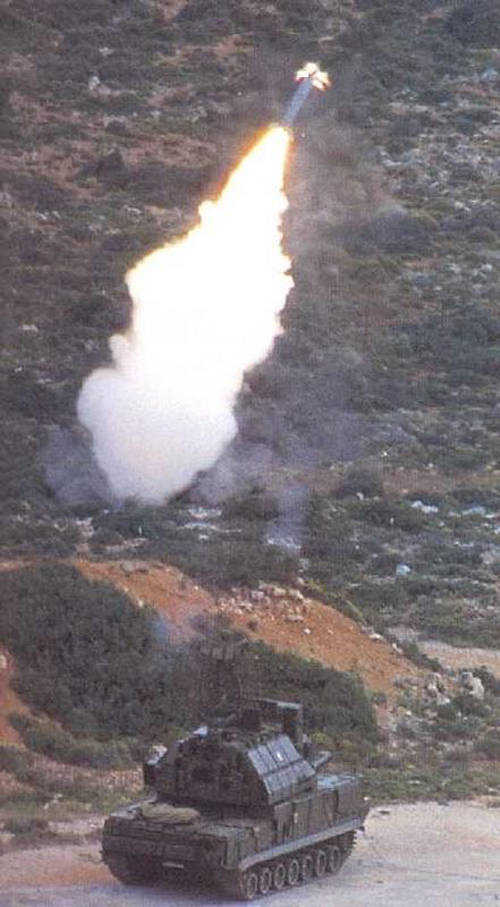
Several enterprises were involved in the mass production of new equipment. Tracked chassis were supplied by the Minsk Tractor Plant, guided missiles were produced at the Kirov Machine-Building Plant. Various components were supplied by a mass of other enterprises. The general assembly of 9А330 combat vehicles was handled by the Izhevsk Electromechanical Plant.
Serial complexes "Tor" were reduced to anti-aircraft regiments of divisions. Each regiment had a regimental command post, four anti-aircraft batteries, as well as service and support units. Each battery included four 9А330 combat vehicles and a battery command post. During the first few years of service, the Tor system was used in conjunction with the regimental and battery-operated control centers PU-12М. In addition, at the regimental level, the MA22 combat command vehicle could be used in conjunction with the MP25 information collection and processing machine. The command post of the regiment could use radars of the type P-19 or 9C18 "Dome".
It was assumed that the air defense system 9K330 will work as part of the battery, protecting objects or troops on the march. At the same time, however, the use of Thor complexes with centralized control from a regimental command post was not ruled out. The structure of control systems was determined in accordance with the intended tasks.
9K331 Thor-M1
Immediately after adopting the 9K330 "Tor" complex, the development of its upgraded version under the designation 9К331 "Tor-М1" began. The purpose of the update was to increase the combat and operational characteristics of the complex through the use of new systems and components. Organizations that participated in the creation of the basic version of “Torah” were involved in the development of the updated project.
During the development of the Tor-M1 project, all the elements of the complex, first of all the combat vehicle, were seriously updated. The upgraded version of the combat vehicle received the designation 9А331. While preserving the general features of the design, new equipment units were introduced and some of the existing ones were replaced. The 9A331 machine has received a new dual-processor computing system with higher performance. The new computer had two target channels, protection against false targets, etc.
The modernized SOC had a three-channel digital signal processing system. Such equipment made it possible to improve the characteristics of noise suppression without using additional tools for analyzing noise conditions. In general, radar complex 9K331 have higher noise immunity in comparison with the systems of the base 9K330.
A guidance station that “mastered” a new type of probing signal was upgraded. The purpose of this update was to improve the characteristics of SN in terms of detecting and tracking hovering helicopters. A target tracking machine was added to the television optical viewfinder.
The most important innovation of the Tor-M1 project was the so-called. Rocket module 9М334. This unit consists of a four-compartment transport and launch container 9Я281 and guided missiles. The module weighing 936 kg was proposed to be transported on transport vehicles and loaded into the launcher of a combat vehicle. The 9A331 machine took place to install two such modules. The use of rocket modules 9М334 greatly simplified the operation of the anti-aircraft complex, in particular, facilitated the reloading of the launcher. It takes about 9 minutes to load two rocket modules using the 245Т25 transport-charging vehicle.
For the "Tor-М1" complex, an anti-aircraft guided missile 9М331 was developed. The rockets of the 9М330 and 9М331 models differed only in the characteristics of the warhead. The new rocket received a modified warhead with enhanced destructive characteristics. All other units of the two missiles were unified. The two types of missiles could be used both by the new Tor-М1 air defense system and by the existing Tor. Also ensured the compatibility of missiles with the ship complex "Dagger".
In the 9K331 SAM batteries, it was proposed to use the unified 9C737 “Ranzhir” battery command posts on a self-propelled chassis. Such machines are equipped with a set of special equipment designed to receive information about the air situation, process the data and issue commands to anti-aircraft combat vehicles. The 9X737 operator’s indicator displayed information about 24 targets detected by the radar associated with the Rangier. For more information on 16 objectives, the command post receives batteries from combat vehicles. A self-propelled command post can independently process data on targets and issue commands to combat vehicles.
The 9C737 "Ranzhir" is built on the MT-LBu chassis and is driven by a four-person crew. It takes about 6 minutes to deploy all the command station facilities.
State tests of the updated Tor-M1 air defense system began in March 1989. Until the end of the year, all the necessary work was carried out at the Emba test site, after which the complex was recommended for adoption. The 9K331 complex was adopted in 1991 year. At the same time, mass production began, which, for obvious reasons, was proceeding at a relatively slow pace.
During the tests, it was revealed that “Tor-M1” has only two main differences from the basic “Torah” in terms of combat qualities. The first is the possibility of simultaneously firing two targets, including two missiles each. The second difference was to reduce the reaction time. When working from a position, it was reduced to 7,4 from, when firing with a short stop - to 9,7 from.
The first few years, the Tor-M1 air defense system was produced in limited quantities only for the Russian armed forces. In the early nineties, the first export contract appeared. The first foreign customer was China. In 1999, the first Tor-M1 complexes were transferred to Greece.
It is known to create several variants of the 9K331 complex on various bases. So, the Tor-M1TA combat vehicle was to be built on the basis of a truck chassis. The Tor-M1B complex could be based on a towed trailer. The Tor-M1TS was developed as a stationary anti-aircraft system.
Since 2012, the armed forces receive an updated version of the anti-aircraft complex under the designation "Tor-M1-2U". It was planned that such combat vehicles would eventually replace the techniques of previous modifications in the troops. Some sources previously claimed that the Tor-M1-2U air defense system is capable of striking up to four targets simultaneously.
"Tor-M2E"
The further development of anti-aircraft complexes of the Tor family was Tor-M2E. As before, the complex received new components and aggregates during the upgrade, which accordingly affected its characteristics. In addition, the use of a wheeled chassis was a curious innovation of the project. The 9А331МУ and 9А331МК combat vehicles are produced on tracked and wheeled chassis, respectively.
One of the main means of improving the performance was a new slotted phased antenna array of a target detection station. In addition, a new optoelectronic system can now be used to detect targets. Due to a serious upgrade of radio-electronic equipment, it turned out that the number of simultaneously monitored targets and tracks was significantly increased. The automation of the Tor-MXNUME complex can simultaneously process up to 2 targets and calculate 48 traces, distributing them in danger. The guidance station can now attack four targets simultaneously with eight missiles.
As before, radar stations and computers of a combat vehicle can operate both during movement and at stops. The search for rockets is carried out only from the site or from short stops. Automation has a so-called. conveyor mode of operation. In this case, the target channel after the missile is aimed at the target is immediately used to attack the next target. The order of attack of targets is determined automatically according to their characteristics and danger.
The combat vehicles of the Tor-MXNUME air defense system can work together in the "link" mode. Two cars of this type can exchange data on the air situation. In this case, the SOC of two cars survey and control a larger area. The defeat of the detected target is the combat vehicle, which has the most favorable position. In addition, the "link" maintains performance in the event of problems with the SOC of one of the combat vehicles. In this case, both vehicles use data from the same radar station.
From the "Torah-M1" new complex took over the antenna-trigger device with sockets for the installation of rocket modules 9М334. Each combat vehicle carries two such modules with four 9М331 missiles each. Due to the use of already developed missiles, the characteristics of the Tor-M2 complex remain at about the same level as in the case of Tor-M1, however, adjusted for more advanced electronic equipment.
Improvement of electronics allowed to significantly increase the maximum values of the range and height of the attacked target. So, a target flying at speeds up to 300 m / s can be hit at distances up to 12 km and altitudes up to 10 km. A target at speeds up to 600 m / s can be shot down at altitudes up to 6 km and distances up to 12 km.
The base of the 9А331М fighting vehicle is the GM-335 tracked chassis. 9А332МК is based on the MZKT-6922 wheeled chassis produced by the Minsk plant of wheeled tractors. At the request of the customer, all the equipment of the anti-aircraft complex can be mounted on a wheeled or tracked chassis. All differences of combat vehicles in this case are only in the characteristics of mobility and features of operation.
To expand the list of possible chassis, a modification was created by the complex under the designation "Tor-М2КМ". In this case, all units of the anti-aircraft complex are mounted in a module that can be installed on any suitable chassis, primarily a wheeled one. In 2013, a sample of Tor-M2KM air defense systems was demonstrated at the MAKS aerospace show on the basis of an Indian-made TATA truck with the wheel formula 8х8. The basis for such a complex can be other trucks.
***
According to The Military Balance 2014, there are currently at least 120 Tor anti-aircraft missile systems in service with Russia. Currently, this equipment is operated as part of the military air defense along with other complexes of a similar purpose. In addition to the Tori, the armament consists of short-range complexes Strela-10 and Wasp of various modifications. In addition, as part of the military air defense there are longer-range systems, thanks to which an echeloned defense system is created from aviation the adversary.
Production and operation of anti-aircraft complexes of the Tor family continues. A gradual replenishment of anti-aircraft units with new combat vehicles with enhanced characteristics. In addition, complexes of new modifications are supplied to foreign countries. So, back in 2013, the military of the Republic of Belarus received three batteries of the Tor-M2 complexes, which made it possible to form the first division. Production and delivery of the Tor family systems continues. Being one of the newest complexes of its class, the Torah will remain in service over the next few decades.
On the materials of the sites:
http://rbase.new-factoria.ru/
http://pvo.guns.ru/
http://bastion-karpenko.narod.ru/
http://ria.ru/
http://tass.ru/
http://bmpd.livejournal.com/
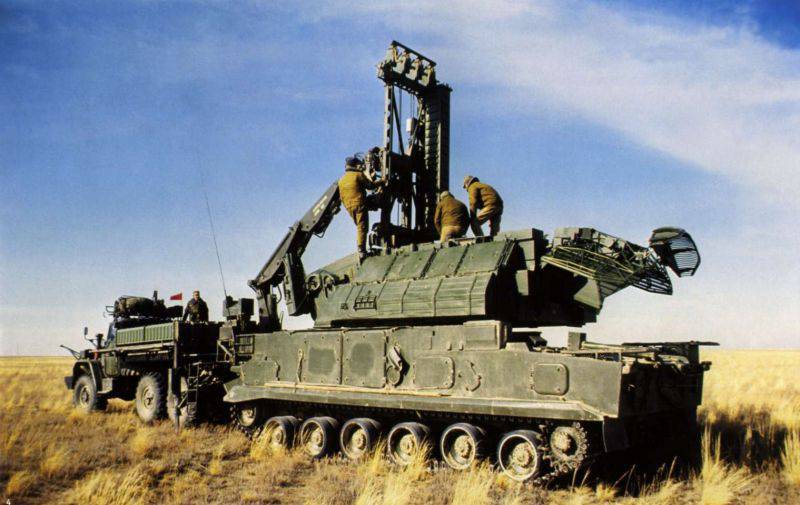
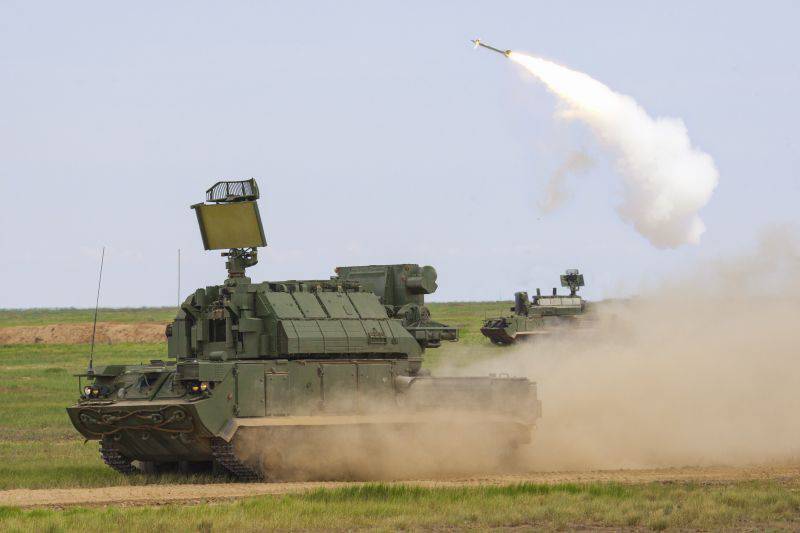
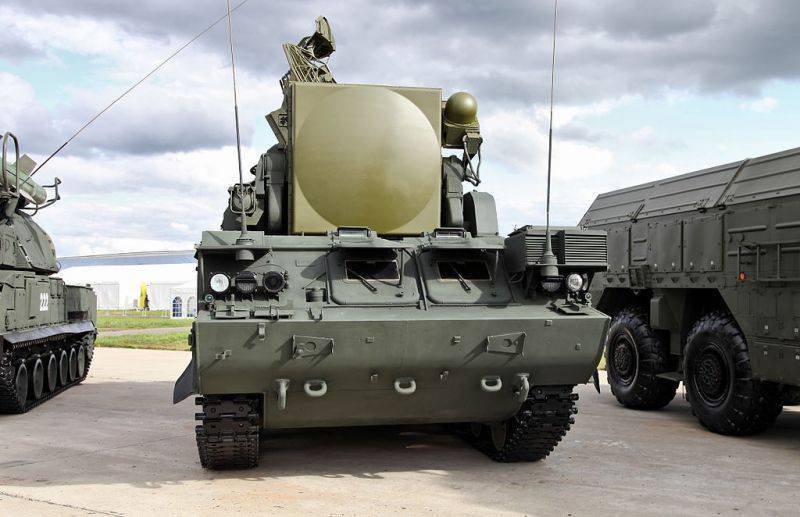
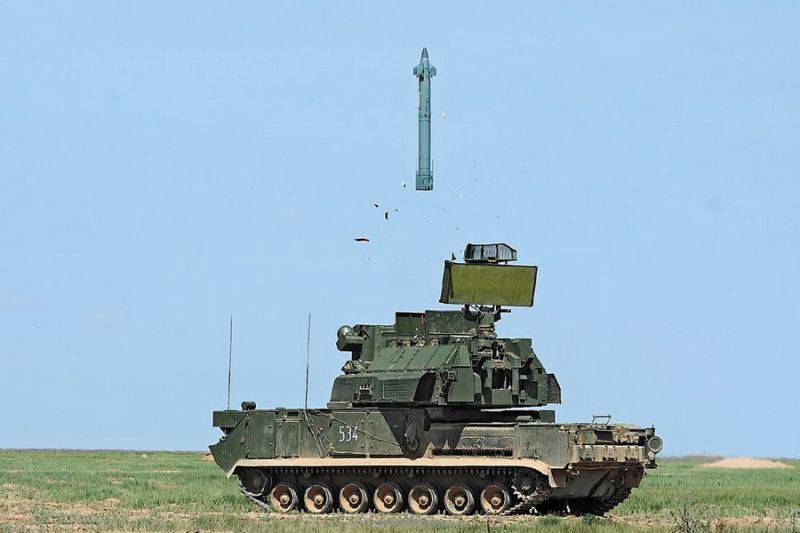
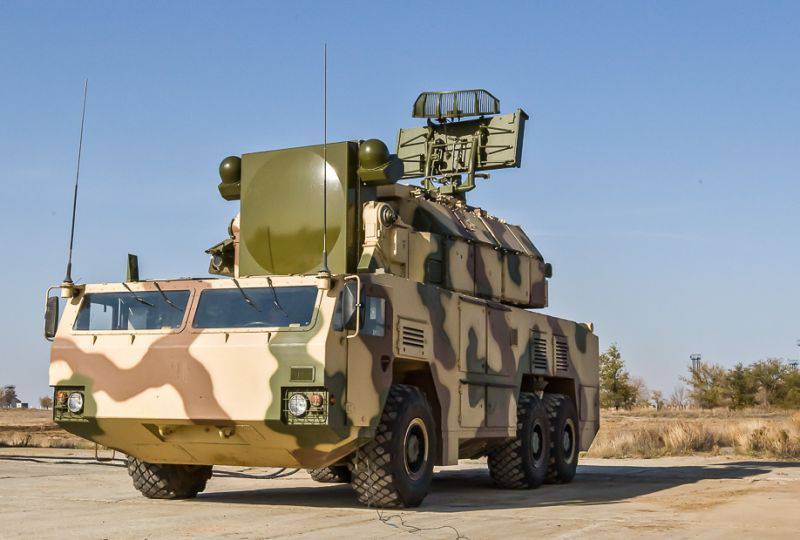
Information